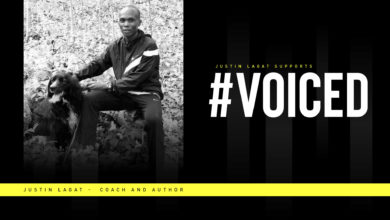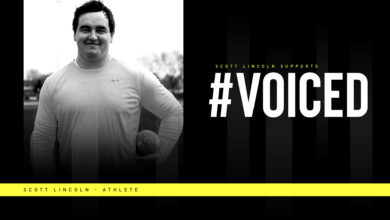Country: New Zealand
Profession: Athlete – Hammer throw
Career highlights:
- 2020 Olympic finalist – 9th
- 2019 Oceania Championships gold medallist
- 2018 Commonwealth Games gold medallist
- 2015 World University Games bronze medallist
- 2014 Commonwealth Games silver medallist
- 2010 Oceania Youth Championships gold medallist
- 2009 Australian Youth Olympic Festival gold medallist
We read that you played plenty of sports growing up, what made you decide to focus on hammer throw?
Of all the sports I did, athletics was the one that had the clearest opportunity for me to regularly compete at a high level. My dad and coach, Dave, was a big influence for me as well. Knowing I had a coach that would always prioritise me was a big reassurance as an athlete. Almost every year from the age of 15, there was an opportunity to represent New Zealand within Oceania or further abroad. It was an awesome experience to have from such a young age.
For those of us that don’t know about throws – can you take us through a perfect hammer throw?
There are two ways to throw the hammer – the hard way and the easy way! The hard way is using brute force and often doesn’t produce good results. The easy way should feel effortless, where you use your body position to counter the force of the hammer. That’s the perfect throw.
Hammer throwing is very rhythm based. Accelerating smoothly while keeping a good connection to the implement (long arms, no jerking it out of a smooth orbit) is the best way to ensure that the force you’re applying is not being wasted.
Over the years you have had a great rivalry with Lauren Bruce. How do you think the competition between the two of you has moved hammer throw forward in New Zealand?
It’s been epic. I set the Oceania Record in mid-2019 with a throw of 71.39m, but since then we’ve moved the record out over 3 metres further between us. Lauren currently holds the Oceania and New Zealand records at 74.61m.
From about the age of 16, throwing a personal best meant breaking a national age group record. To go from being the best female hammer thrower New Zealand had ever seen, to someone else adding a metre to my personal best and breaking those records was such an awesome challenge. It definitely lit a fire under me and challenged me to lift the lid on what I thought was possible for myself.
Having two hammer throwers at the Tokyo Olympics for New Zealand definitely raised the profile of the sport. I also hope it showed that while it is a niche sport, we have the know-how in New Zealand to create some outstanding hammer throwers.
Going to Princeton – an Ivy league university – must have been an incredible experience. But how did you balance the academic and sporting demands placed on you?
It definitely had its challenges, but I know I was a happier person and better athlete for having both going on at once. I’ve always been someone that hasn’t taken a lot of personal satisfaction from being a full-time athlete, even though I love training. The academic workload stimulated me in a different way to training, and when training wasn’t going well, I could still feel a sense of achievement through my study. The opposite was also true – if the study was really getting me down, training was my happy place where I could switch off, move my body, and reset.
Balancing the two did require a fairly strict schedule and a high level of accountability. My number one priority was getting my requisite nine hours of sleep a night. Without that, I’m a terrible human, I get sick, and I can’t do the things I want to do. Next was carving out time for training and always getting it done. Then I studied as much as I could handle in between and told myself if I was passing comfortably, I could accept the grades I got. I was lucky enough to have a great group of friends that made sure I didn’t miss out on having a heap of fun in between as well.
How do you balance being a financial analyst and full-time athlete?
With a lot of very supportive and flexible people around me! I’m lucky that New Zealand has high performance centres in main cities so wherever I’m living, I have access to a gym with all the equipment I need. My two coaches, Dave, and my strength and conditioning coach Angus Ross, have coached me by distance for almost 50% of the last three years. Dave and I did distance coaching for the four years while I was in Princeton, so we’re old hands at it. We work with a high-trust model, where my coaches know if they put something in the programme, I will get it done.
Both my coaches live in the Waikato region of New Zealand, but I work for the Reserve Bank of New Zealand in Wellington. The RBNZ have been so supportive and allowed me to work remotely from Hamilton and drop my hours for the 10 months or so leading up to the Olympics. When I’m working full-time, I do have to reduce my training slightly as I start to compromise on recovery if I try to do it all.
I have periods where training takes full priority, and other times when I can ease up and put more attention into work. It’s just making the trade-off between what I want to achieve at work and how much training I need to put in to achieve at the sporting level I want to. The people around me have allowed me the luxury of moving up and down that scale throughout the last few years.
What is the strangest (or most interesting) thing that has happened to you in your travels around the world?
Travelling to Japan this year would have to have been my strangest experience to date. Seeing large international airports almost empty, the anxiety-fuelled sanitising of every surface you come near, masks, saliva tests, not being able to leave the hotel or village except for training. It definitely tops the list. Regardless, I’m so grateful that the Olympics went ahead, and that Japan did such a good job of implementing its covid protocols so that we could compete safely and not put the Japanese public at further risk.
It was a peculiar bonding experience with my Kiwi teammates, sitting lined up down the hotel hallway outside the doctor’s room, trying to muster enough saliva for a covid sample as soon as we woke up. Bleary-eyed athletes, some still in pyjamas, frantically trying to suck saliva out of the dry depths of their mouth so they could finally get to breakfast must have been a strange sight for hotel staff!
At the end of a long, tiring week, what is your favourite thing to do to re-charge?
I absolutely love being by the sea, I find it so relaxing and grounding. I try to go for a swim as often as possible (which in Wellington is closer to cold-water immersion than swimming!) but it always helps me recharge. When I’m in Hamilton, we’re not as close to the sea, so my mate Tori Peeters (javelin thrower) and I try to get to Raglan for a swim on the weekends, followed up by coffee at our favourite haunt, Raglan Roast.
Can you tell us a bit more about High Impact Athletes and what it means to you?
I’ve always felt a strong desire to give back in some way, which is possibly why I struggle being a full-time athlete. While there are plenty of ways to give back as an athlete, finding a cause which resonates and dedicating what precious little energy and time you have left around training can be really difficult.
Enter Marcus Daniell and High Impact Athletes (HIA).
Olympic medallist and fellow Kiwi, Marcus Daniell, founded a charity that encourages athletes to pledge to donate 2% of their income to highly effective charities (charities that rigorously measure their impact and have high impact per dollar). Athletes that can’t afford to donate are encouraged to use their platforms to be ambassadors for a high-impact cause that is meaningful to them.
Hammer throwing is not a high-income sport, but I do have a salary from my work, so I took the pledge. It’s a way for me to know that I’m giving back in a meaningful and frequent way. I know that the charities that HIA highlights are running evidence-based interventions with the analysis to prove their effectiveness, and that they have a high impact per dollar donated.
Many athletes have at platform that they can leverage, and some are fortunate enough to earn a lot of money through their sport. I think becoming a High Impact Athlete is one of the most accessible and low-effort ways that athletes can leverage their sporting career to have maximal positive impact on the world.


